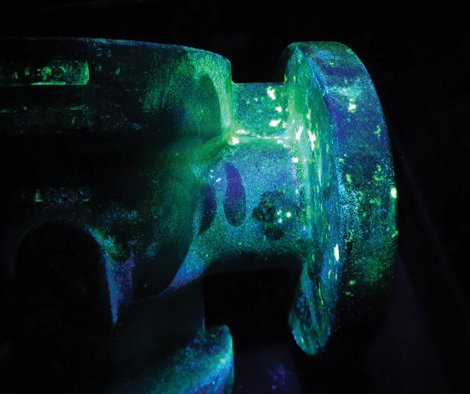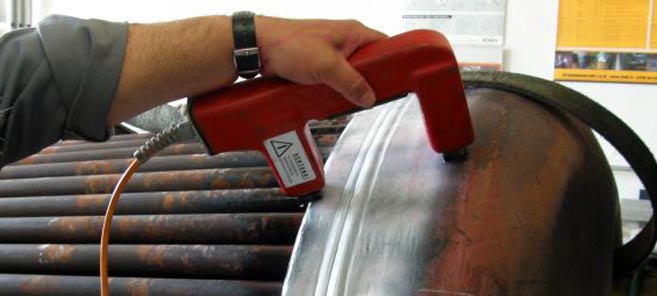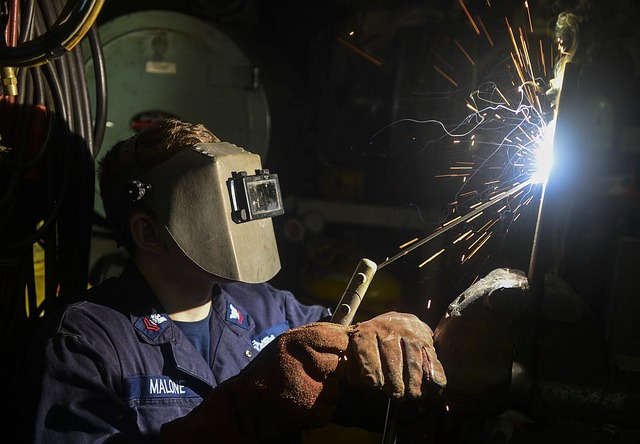Last Updated on 23 Aprile 2022 by Marco Gregorin
Condividi questa storia, scegli tu dove!
Last Updated on 23 Aprile 2022 by Marco Gregorin

Le norme di metodo per i Liquidi Penetranti sono 6 e tutte fanno parte della serie di norme UNI EN ISO 3452.
- UNI EN ISO 3452-1 Esame con Liquidi Penetranti – Parte 1: Principi Generali
- UNI EN ISO 3452-2 Esame con Liquidi Penetranti – Parte 2: Prove dei materiali utilizzati nell'esame con Liquidi Penetranti
- UNI EN ISO 3452-3 Esame con Liquidi Penetranti – Parte 3: Blocchi di riferimento per le prove
- UNI EN ISO 3452-4 Esame con Liquidi Penetranti – Attrezzatura
- UNI EN ISO 3452-5 Esame con Liquidi Penetranti – Parte 5: Prove con penetranti a temperature maggiori di 50 °C
- UNI EN ISO 3452-6 Esame con Liquidi Penetranti – Parte 6: Prove con penetranti a temperature minori di 10 °C
Le norme aggiornate nel Novembre 2021 sono la UNI EN ISO 3452-1 e la UNI EN ISO 3452-2
Cosa cambia ?
ISO 3452-1 Liquidi Penetranti applicazione del metodo
Il principale cambiamento che salta subito agli occhi della norma riguarda l'introduzione della nuova procedura per i Liquidi Penetranti Tipo I ( Fluorescenti ).
In altre parole la procedura introdotta prevede il controllo con liquidi penetranti Fluorescenti ( Tipo I ) senza l'applicazione dello sviluppatore.
In breve possiamo dire che la norma si aggiorna alle case produttrici di Liquidi Penetranti che da un po di tempo propongono prodotti Fluorescenti che permettono un controllo senza l'applicazione dello Sviluppatore.
Per quanto riguarda le condizioni di irraggiamento e illuminamento, non vengono contemplate invece le Lampade UV (ultraviolette) ad alto rendimento che alcuni produttori propongo per un controllo anche senza le condizioni di oscuramento previste dalla norma UNI EN ISO 3059:2013. La norma ISO 3059 il cui ultimo aggiornamento risale al 2013, non permette controlli con lampade UV e illuminamento della luce visibile sulla superficie di controllo superiore ai 20 Lux.
| Norma UNI EN ISO 3452-1 | |
| Edizione 2013 | Edizione 2021 |
| Confronto Indice della normativa vecchia e nuova |
|
| Foreword iv 1 Scope 1 2 Normative references 1 3 Terms and definitions 1 4 Safety precautions 1 5 General principles 2 5.1 Personnel 2 5.2 Descriptionofthemethod 2 5.3 Process sequence 2 5.4 Equipment 3 5.5 Effectiveness 3 6 Products, sensitivity and designation 3 6.1 Productfamily 3 6.2 Testing products 3 6.3 Sensitivity 3 6.4 Designation 3 7 Compatibility of testing materials with the part(s) to be tested 4 7.1 General 4 7.2 Compatibilityofpenetranttestingproducts 4 7.3 Compatibility of penetrant testing materials with parts under examination 4 8 Test procedure 5 8.1 Written test procedure 5 8.2 Precleaning 5 8.3 Temperature 5 8.4 Application of penetrant 5 8.5 Excess penetrant removal 6 8.6 Application of developer 7 8.7 Inspection 9 8.8 Postcleaning and protection 10 8.9 Retesting 10 9 Test report 10 Annex A (normative) Main stages of penetrant examination 12 Annex B (normative) Process and control tests 13 Annex C (informative) Example test report 21 Bibliography 22 |
Foreword v 1 Scope 1 2 Normative references 1 3 Terms and definitions 1 4 Safety precautions 2 5 General principles 2 5.1 Personnel 2 5.2 Description of the method 2 5.3 Process sequence 2 5.4 Equipment 3 5.5 Effectiveness 3 6 Products, sensitivity and designation 3 6.1 Product family 3 6.2 Testing products 3 6.3 Sensitivity 3 6.4 Designation 4 7 Compatibility 4 7.1 General 4 7.2 Compatibility of penetrant testing products 4 7.3 Compatibility of penetrant testing products and the material to be tested 4 8 Test procedure 5 8.1 Written test procedure 5 8.2 Precleaning 5 8.2.1 General 5 8.2.2 Mechanical precleaning 5 8.2.3 Chemical precleaning 5 8.2.4 Drying 5 8.3 Temperature 5 8.4 Application of penetrant 6 8.4.1 Methods of application 6 8.4.2 Penetration time 6 8.5 Excess penetrant removal 6 8.5.1 General 6 8.5.2 Water 6 8.5.3 Solvents 6 8.5.4 Emulsifier 6 8.5.5 Water and solvent 7 8.5.6 Excess penetrant removal check 7 8.5.7 Drying after excess penetrant removal 7 8.6 Developing 7 8.6.1 General 7 8.6.2 Dry developer 8 8.6.3 Water-suspendable developer 8 8.6.4 Solvent-based developer 8 8.6.5 Water soluble developer 8 8.6.6 Water- or solvent-based for special application (e.g. peelable developer) 8 8.6.7 No developer (type I only) 8 8.7 Inspection 9 8.7.1 General 9 8.7.2 Viewing conditions 9 8.7.3 Wipe-off technique 9 8.7.4 Recording 10 8.8 Post cleaning and corrosion protection 10 8.8.1 Post cleaning 10 8.8.2 Corrosion protection 10 8.9 Retesting 10 9 Test report 10 Annex A (normative) Main stages of standard penetrant examination 12 Annex B (normative) Process and control tests 14 Annex C (informative) Example test report 22 Bibliography 23 |
Condividi questa storia, scegli tu dove!
Corso Liquidi Penetranti
Corsi metodo di controllo Liquidi Penetranti - Certificazioni ISO [...]
Patentini Saldatura – Qualifica dei saldatori UNI EN ISO 9606
Patentini SaldaturaQualifica e Certificazione dei Saldatori in Accordo a ISO [...]



